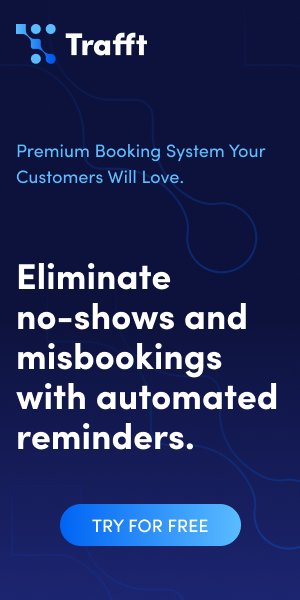The Best SaaS Pricing Models And Strategies to Use

Software as a Service (SaaS) companies often have software license pricing models with recurrent billing. Pricing strategies are essential for SaaS companies to avoid losing out on all kinds of revenue.
Customers might be deterred by insufficient package options or you might not be charging enough for your services. You could also be missing out on revenue opportunities that help to drive growth and elevate your business. SaaS pricing models help to evaluate the most ideal subscription packages.
Learn below more about this topic in this article created by our team at TMS.
How is SaaS pricing different?
SaaS companies usually charge their customers on a subscription basis, making it difficult to compare pricing models to purchased products. SaaS subscriptions spread the value out over a period of time instead of using a one-time payment. As an added challenge, customers can choose from a variety of package options and, ideally, be willing to continue payment.
The best way to create a SaaS pricing model is to determine:
- How to pitch your product
- Who is your consumer
- The value your product offers the consumer
- How much the consumer is willing to pay
The Most Common SaaS Pricing Models
Supply and demand is the foundation of economics, thus it is essential to determine how much the target demographic is willing to pay for your product, as well as maximizing the revenue each sale will provide.
Having an overpriced product can deter new users from subscribing. However, having an underpriced product leaves you with tight profit margins, which can put your business at risk.
In order to find a happy medium, there are eight common software pricing strategies:
Usage-based

Internet or data usage plans where you pay a specific rate for how much you use are a good example of the usage-based pricing model. It works best when there is a bandwidth use or pay-per-use setup.
This SaaS pricing strategy works well for companies where the cost only increases when there is an increase in usage. Customers only pay for what they use, which can feel less daunting than paying a flat fee. This is particularly valuable for small companies who would only use the service enough to make it worth it.
Flat rate

Charging one price for the service being offered is the simplest pricing model. It is billed on a weekly, monthly, or annual recurrent cycle. A popular example would be subscribing to the eCommerce SaaS, CartHook.
The advantage of a flat rate is its simplicity, making it easier to market and sell because consumers don’t have to make any choices about tiered features. There is only one plan to communicate to the consumer with one set of features.
Tiered
This SaaS pricing model allows for consumers to pick from a set of packages, each offering different levels of features at different prices. For example, a basic package would be the cheapest and would also only have basic features. By comparison, an advanced package would be more expensive and have additional features.
It is common for companies to offer three or four different package options. The advantage is that customers can pay less if they don’t require all the features or pay more if they do. This pricing model reaches a wider demographic than a flat rate SaaS model.
User-based

The user-based price model for SaaS offers every user the same features but the cost increases for each additional user on an account. This is used most commonly by enterprise software pricing such as Google for Business.
The advantage of per-user pricing is that it is easy to determine what the cost will be for a business. In addition, everyone gets the same set of features. However, this model can be limiting when companies want to save money by having fewer users.
While the billing is often monthly, some user-based packages require a yearlong commitment. This can be another factor to consider as it may deter businesses that experience a lot of staffing changes.
Storage
SaaS services that offer cloud storage usually charge users based on how much storage they are using. Tiered packages offering different set amounts of storage or unlimited storage are common. Alternatively, the cost can be per unit of storage – usually per GB – so that the price increases with each additional unit.
Certain companies, such as Google and Dropbox, allow users a small amount of capped free storage. Once users reach the limit, they are offered packages at different price points. This is a good strategy because the customer is familiar with using the service and usually wants to stick with it. Otherwise, they are faced with having to move all of their documents and photos to a different service.
Feature-based

Similar to tiered pricing, feature-based pricing increases the cost as customers choose to add more features. It has the advantage of being more customizable than a tiered approach. Customers don’t need to pay for features that they won’t use, therefore they feel they are getting the best value for their money, and enjoy tailoring a service to fit their own needs.
Freemium
This is a very common SaaS pricing model, where companies, particularly with app-based software, offer a free version of their software. The free version has limited capabilities but enables users to learn the value of the SaaS, so they may desire to pay for the premium version to access all the features.
The advantage of this pricing strategy is that the Customer Acquisition Cost stays low. You can also include ads for your own product within the software at no additional cost: free marketing!
However, there is a risk involved in offering a freemium version. Users may decide that the free version is perfectly adequate and there is no need to upgrade, in which case, you may not generate enough business revenue.
Free with Ads

This SaaS price model allows users to access a free version of the platform with ads. Alternatively, they can choose to pay for an ad-free version that usually has other bonus features.
This can provide the best of both worlds by allowing you to generate enough revenue through ads while offering the user a free service. Ads can become sufficiently annoying that users may choose to access the premium version.
The most popular example of this strategy can be seen in Spotify. Users can access Spotify for free and listen to as much as they want but their listening pleasure is interrupted by ads. Paying for premium removes ads and also provides a few extra features such as downloading playlists for offline use.
Value Pricing Strategy
Customers often don’t think about the cost that goes into software development or the revenue required to stay afloat. Consumers are generally self-centered and only concerned with finding an appropriate solution at the best value.
Value pricing is determined by how valuable or helpful the service is perceived to be. It might also factor in the demand for the service in the marketplace. For example, a service that customers can see as being valuable because it makes their life easier can be priced higher with wider margins. In comparison, a service that doesn’t have a lot of demand in the market will likely need to be priced lower with tighter margins.
Ending thought on the best SaaS pricing models and strategies to use
Choosing the right software pricing strategy is crucial to attracting customers and driving company growth. Insufficient revenue can leave your business vulnerable to collapse.
These SaaS pricing models are not mutually exclusive and there are companies that use a combination of pricing models to try to best reach their target market.
Regardless of which strategy you use, it is important to consider what your customer would be willing to pay based on the value the service offers them. A highly valuable service will be able to charge more because of increased demand.
If you enjoyed reading this article on SaaS pricing models, you should check out this one about SaaS metrics.
We also wrote about a few related subjects like SaaS development, SaaS vs PaaS, SaaS startups and go to market strategy.
